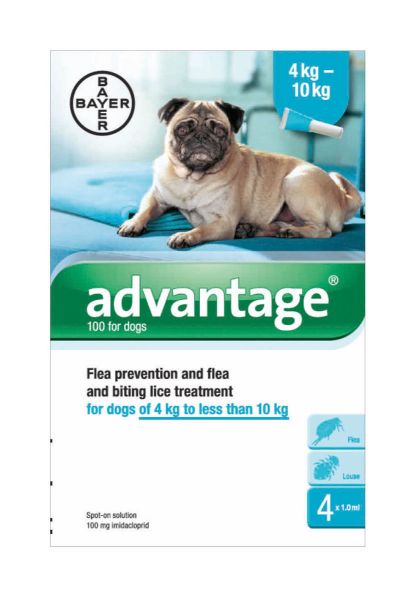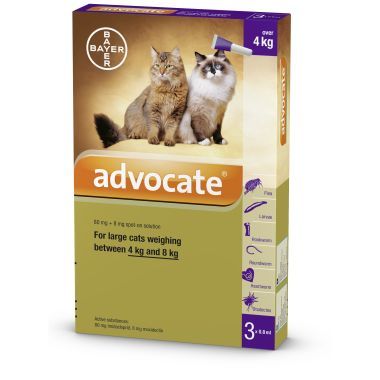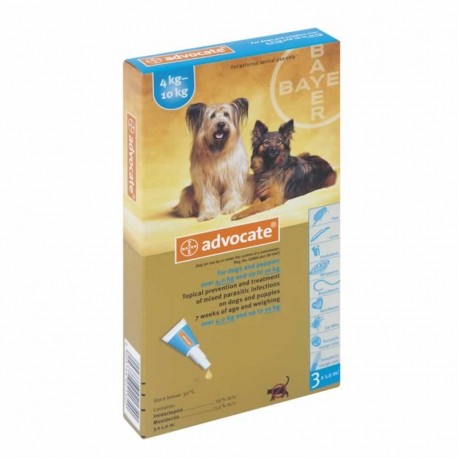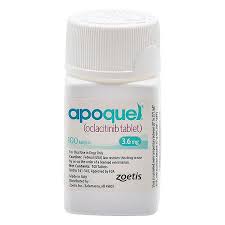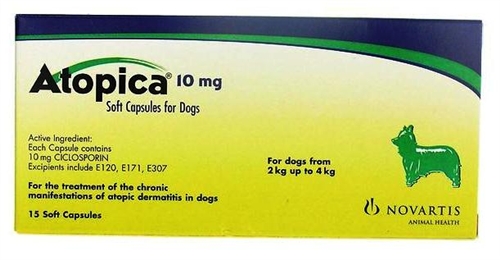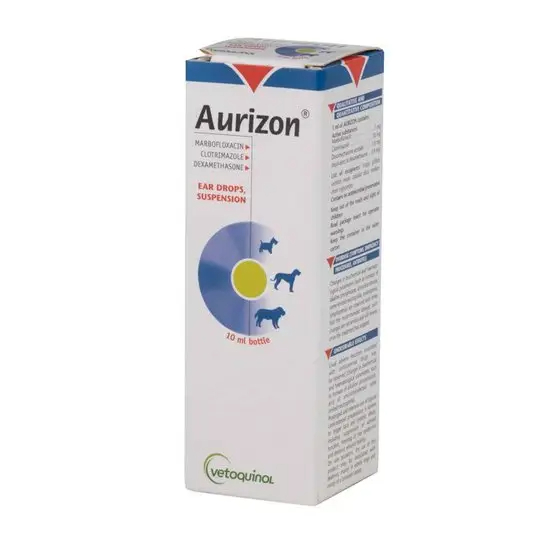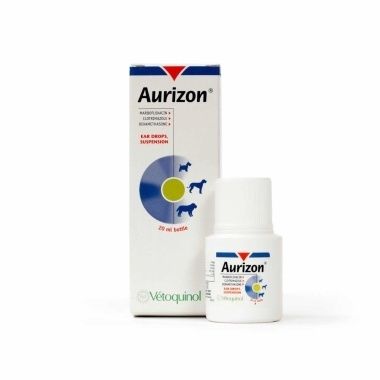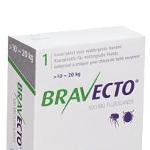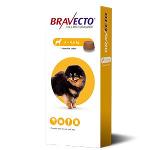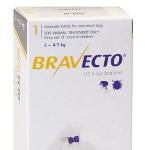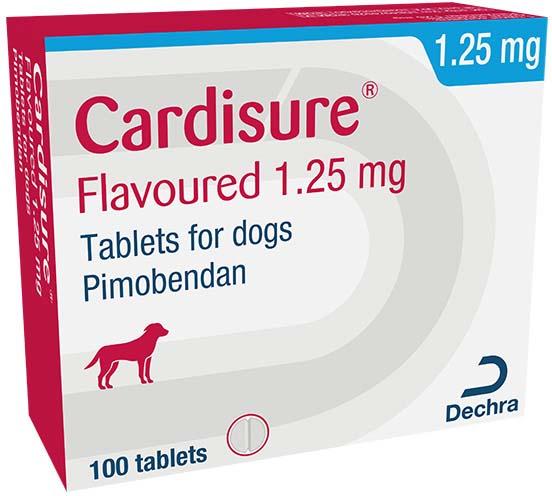Advantage Spot-on Solution for Dogs Product: Advantage 100 Spot-on Solution for Dogs Advantage 250 Spot-on Solution for Dogs Advantage 400 Spot-on Solution for Dogs Incorporating: Advantage 40 & 80 Spot-on Solution for Small Cats, Small Dogs and Pet Rabbits Pharmaceutical form Spot-on solution. Clear yellow to slightly brownish solution Clinical particulars Target species Dogs (see also Advantage Spot-on Solution for Cats and Pet Rabbits datasheet) Indications for use, specifying the target species For the prevention and treatment of flea infestations and for the treatment of biting lice (Trichodectes canis) on dogs. Fleas on dogs are killed within one day following treatment. One treatment prevents further flea infestation for four weeks. The product can be used as part of a treatment strategy for the control of Flea Allergy Dermatitis (FAD) where this has been previously diagnosed by a veterinary surgeon. Contraindications Do not treat unweaned puppies of less than 8 weeks of age. Do not use in animals that are known to be hypersensitive to the active substance or any of the excipients Special warnings There are no special warnings required for the target species. Apply only to undamaged skin. Special precautions for use Special precautions for use in animals This product is for topical use and should not be administered orally. Care should be taken to avoid the contents of the pipette coming into contact with the eyes or mouth of the recipient animal. Do not allow recently treated animals to groom each other. Any collar should be removed prior to application of the product. Prior to re-fitting the collar, the treated area should be visually assessed to ensure it is dry. For external use only. Special precautions to be taken by the person administering the veterinary medicinal product to animals People with known hypersensitivity to Imidacloprid should avoid contact with the veterinary medicinal product. This product contains benzyl alcohol and may cause skin sensitisation or transient skin reactions (for example, irritation, tingling). Wash hands thoroughly after use. Wash off any skin contamination with soap and water. People with known skin sensitivity may be particularly sensitive to this product. Avoid contact of the product with the eyes or mouth. Do not massage the application site. If the product gets into eyes accidentally, the eyes should be thoroughly flushed with water. If skin or eye irritation persists, or the product is accidentally swallowed, obtain medical attention. Do not eat, drink or smoke during application. After application, do not stroke or groom animals until application site is dry. Other precautions Imidacloprid is toxic to aquatic organisms. To avoid adverse effects on aquatic organisms, treated dogs should not be allowed to enter surface water for 48 hours after treatment. The solvent in this product may stain certain materials including leather, fabrics, plastics and finished surfaces. Allow the application site to dry before permitting contact with such materials. Adverse reactions (frequency and seriousness) The product is bitter tasting and salivation may occa¬sionally occur if the dog licks the application site immediately after treatment. This is not a sign of intoxication and disap¬pears within some minutes without treatment (see also section Amounts to be administered and administration route). On very rare occasions skin reactions such as hair loss, redness, itching and skin lesions may occur. Agitation and disorientation has also been reported. Excessive salivation and nervous signs such as incoordination, tremors and depression have been reported exceptionally in dogs. Oral ingestion may result in other gastrointestinal signs (vomiting and diarrhoea), which have been observed very rarely based on post-marketing data. The frequency of adverse reactions is defined using the following convention: - very common (more than 1 in 10 animals treated displaying adverse reaction(s)) - common (more than 1 but less than 10 animals in 100 animals treated) - uncommon (more than 1 but less than 10 animals in 1,000 animals treated) - rare (more than 1 but less than 10 animals in 10,000 animals treated) - very rare (less than 1 animal in 10,000 animals treated, including isolated reports) Use during pregnancy, lactation or lay No primary embryo¬toxic, teratogenic or reproductive toxic effects have been observed during the studies with imidacloprid on rats and rabbits. Studies on pregnant and lactating bitches together with their offspring are limited. Evidence so far suggests that no adverse effects are to be expected in these animals. Interaction with other medicinal products and other forms of interaction No incompatibility has been observed between this product at twice the recommended dose and the following commonly used veterinary products: fenthion, lufenuron, milbemycin, febantel, pyrantel and praziquantel. The compatibility of the product was also demonstrated with a wide range of routine treatments under field conditions including vaccination. Amounts to be administered and administration route Dosage and Treatment Schedule Dog (kg bw) Product Number of Pipettes Imidacloprid (mg/kg bw) Less than 4 kg Advantage 40 mg Spot-On Solution for Small Cats, Small Dogs and Pet Rabbits 1 x 0.4 ml minimum of 10 4 < 10 kg Advantage 100 for Dogs 1 x 1.0 ml minimum of 10 10 < 25 kg Advantage 250 for Dogs 1 x 2.5 ml minimum of 10 25 < 40 kg Advantage 400 for Dogs 1 x 4.0 ml minimum of 10 more than 40 kg Advantage 400 for Dogs 1 x 4.0 ml minimum of 10 Treatment should be repeated after 4 weeks. Treatment of nursing bitches controls flea infestations on both dam and offspring. Fleas are killed within one day following treatment. One treatment prevents further flea infestation on dogs for up to 4 weeks. Should re-treatment become necessary earlier than 4 weeks, do not re-treat more frequently than weekly. Re-infestation from emergence of new fleas in the environment may continue to occur for six weeks or longer after treatment is initiated. More than one treatment may therefore be required, depending on the level of fleas in the environment. To aid reduction in environmental challenge, the additional use of a suitable environmental treatment against adult fleas and their developing stages is recommended. In order to reduce further the environmental challenge, it is recommended that all dogs, cats and rabbits in the household are treated. The product remains effective if the animal becomes wet, for example after swimming or exposure to heavy rain. However, in cases of frequent swimming or bathing re-treatment may become necessary, depending on the presence of fleas in the environ¬ment. In these cases do not re-treat more frequently than once weekly. In case of biting louse infestation, a further veterinary examination 30 days after treatment is recommended as some animals may require a second treatment. Method of Administration Remove one pipette from the package. For dogs of 40 kg body weight and greater use two pipettes. Hold pipette in an upright position, twist and pull off cap. Use reversed cap to twist and remove seal from pipette. For dogs less than 25 kg body weight: With the dog in the standing position, part the coat between the shoulder blades until the skin is visible. Place the tip of the pipette on the skin and squeeze firmly several times to empty the contents directly onto the skin. For dogs of 25 kg body weight and greater: The dog should be standing for easy application. The entire contents of the pipette(s) should be applied evenly to three or four spots all located at different application sites along the dog’s backline from the shoulder to the base of the tail. At each spot part the coat until the skin is visible. Place the tip of the pipette on the skin and gently squeeze to expel a portion of the contents directly onto the skin. For all dogs: Do not apply an excessive amount of solution at any one spot that could cause some of the solution to run off the side of the dog. The product is bitter tasting and salivation may occa¬sionally occur if the dog licks the application site immediately after treatment. This is not a sign of intoxication and disappears within some minutes without treatment. Correct applica¬tion will minimize the opportunity for the dog to lick the product. Apply only to undamaged skin. Do not allow recently treated animals to groom each other. Overdose (symptoms, emergency procedures, antidotes), if necessary No adverse clinical signs were produced by either individual doses of up to 200 mg/kg body weight (five to eight times the therapeutic dose), daily treatments at 100 mg/kg body weight for five consecutive days or weekly treatments at five times the maximum dose rate for eight consecutive weeks. In rare cases of overdose or licking of treated fur, nervous system disorders (such as twitching, tremors, ataxia, mydriasis, miosis, lethargy) can occur. Poisoning following inadvertent oral uptake in animals is unlikely. In this event, treatment should be symptomatic under veterinary medical attention. There is no known specific antidote but ad¬ministration of activated charcoal may be beneficial. Withdrawal period(s) Not applicable.

